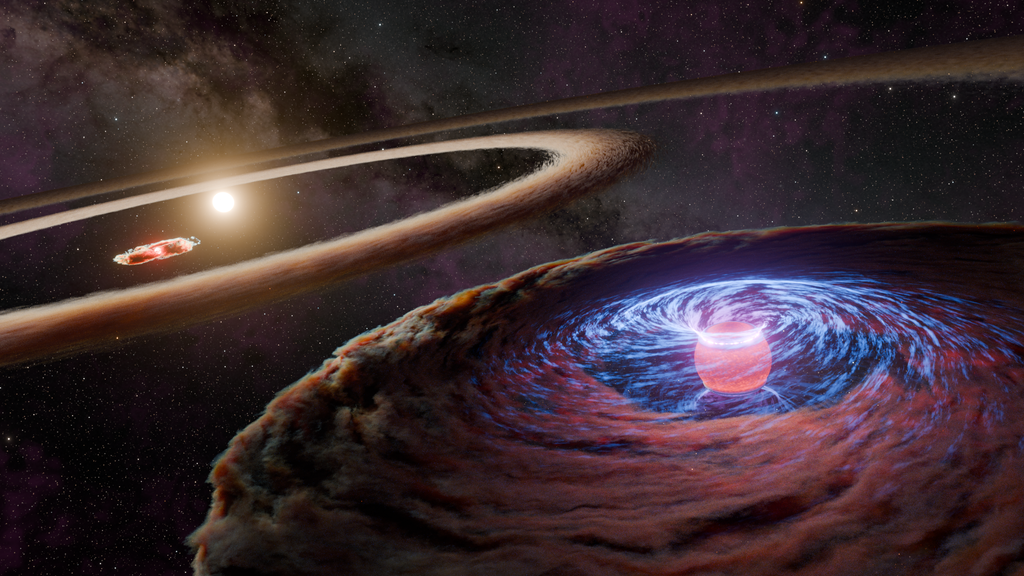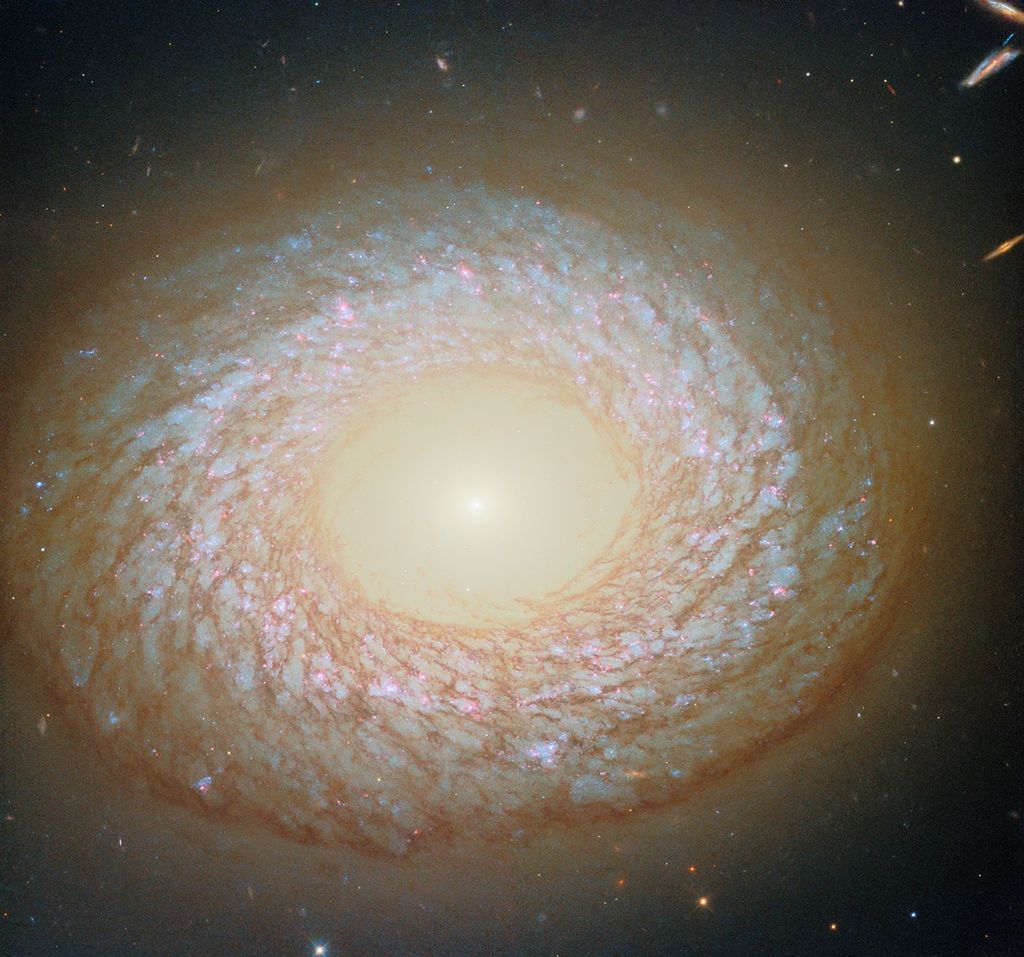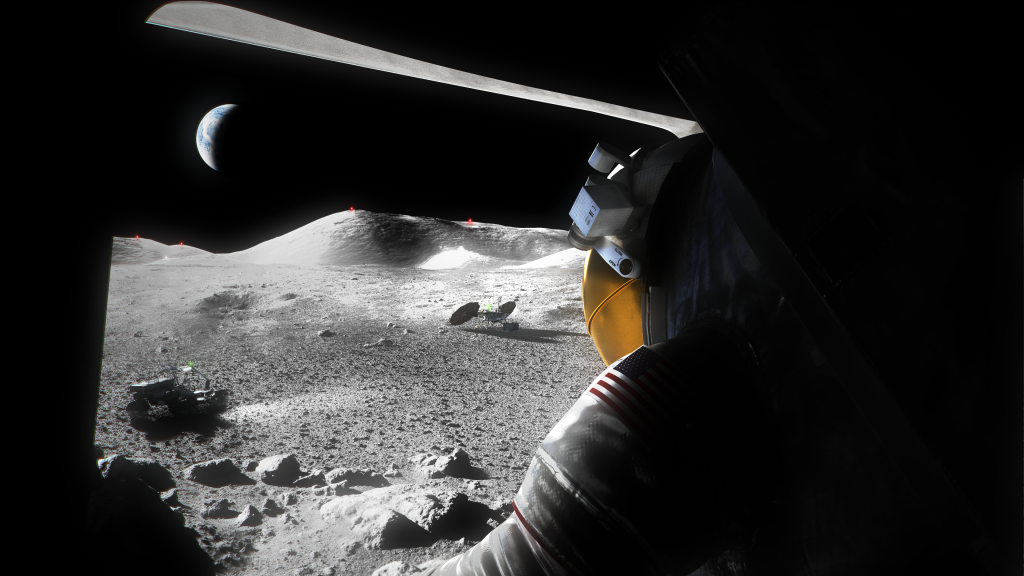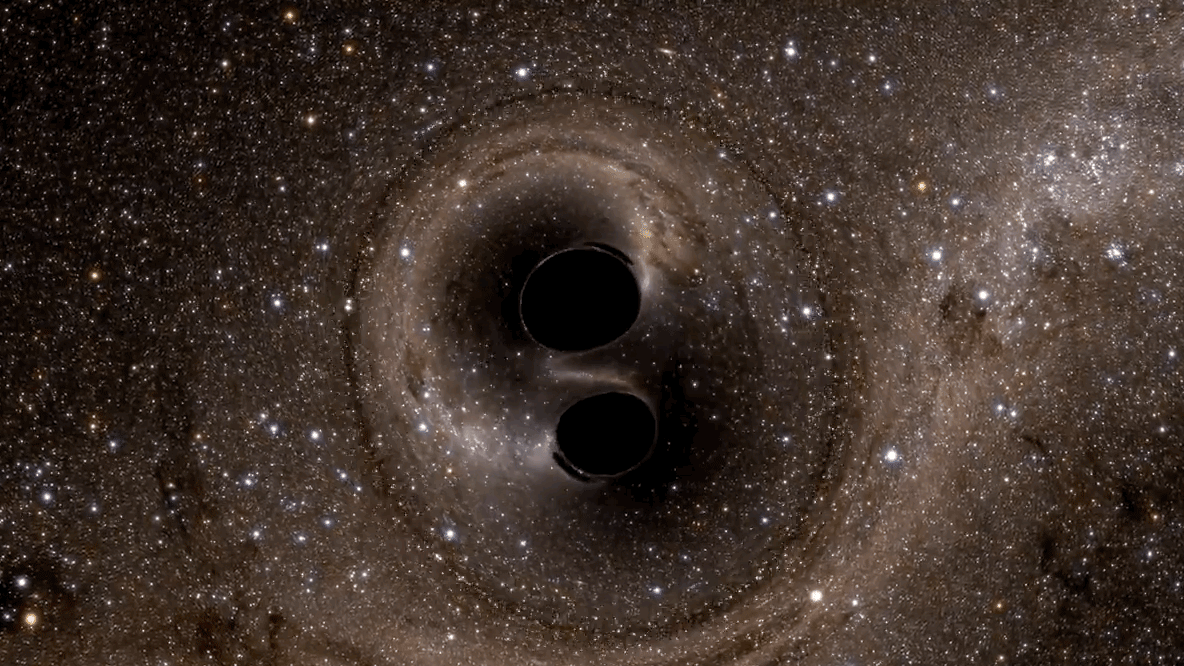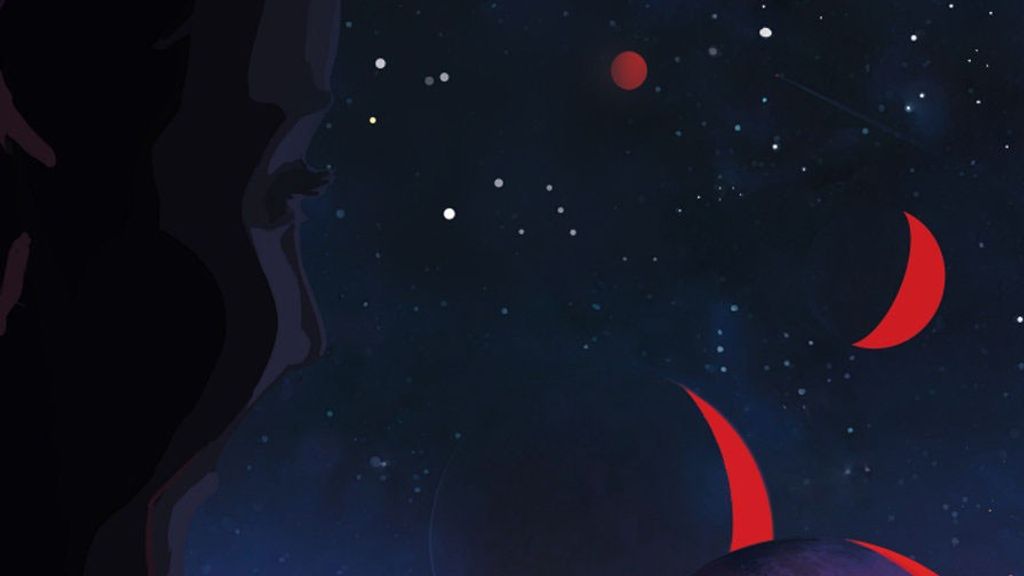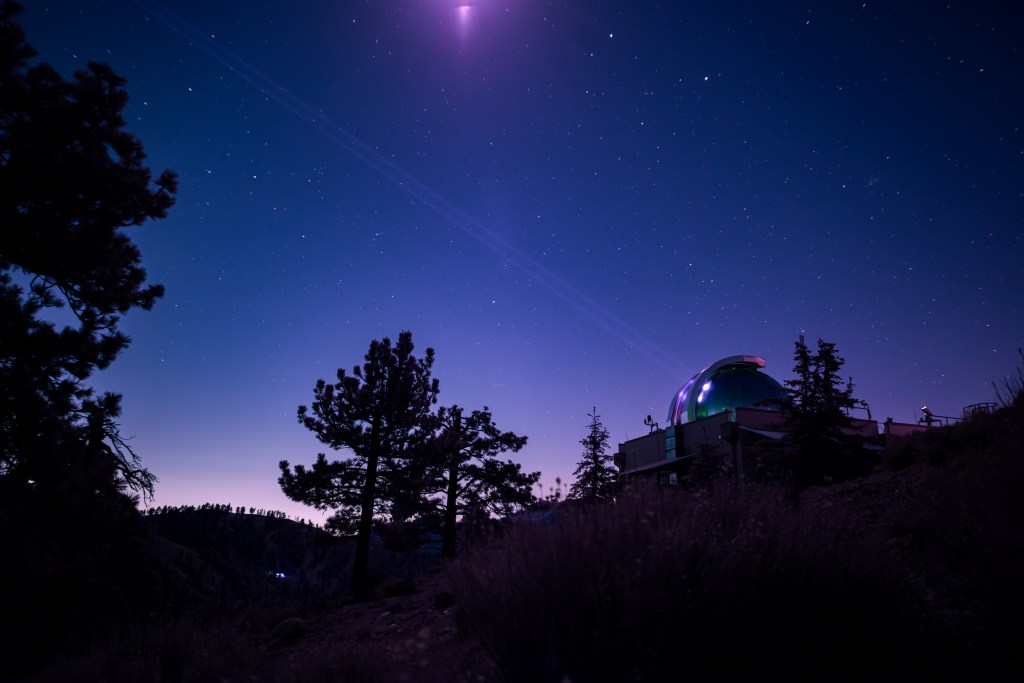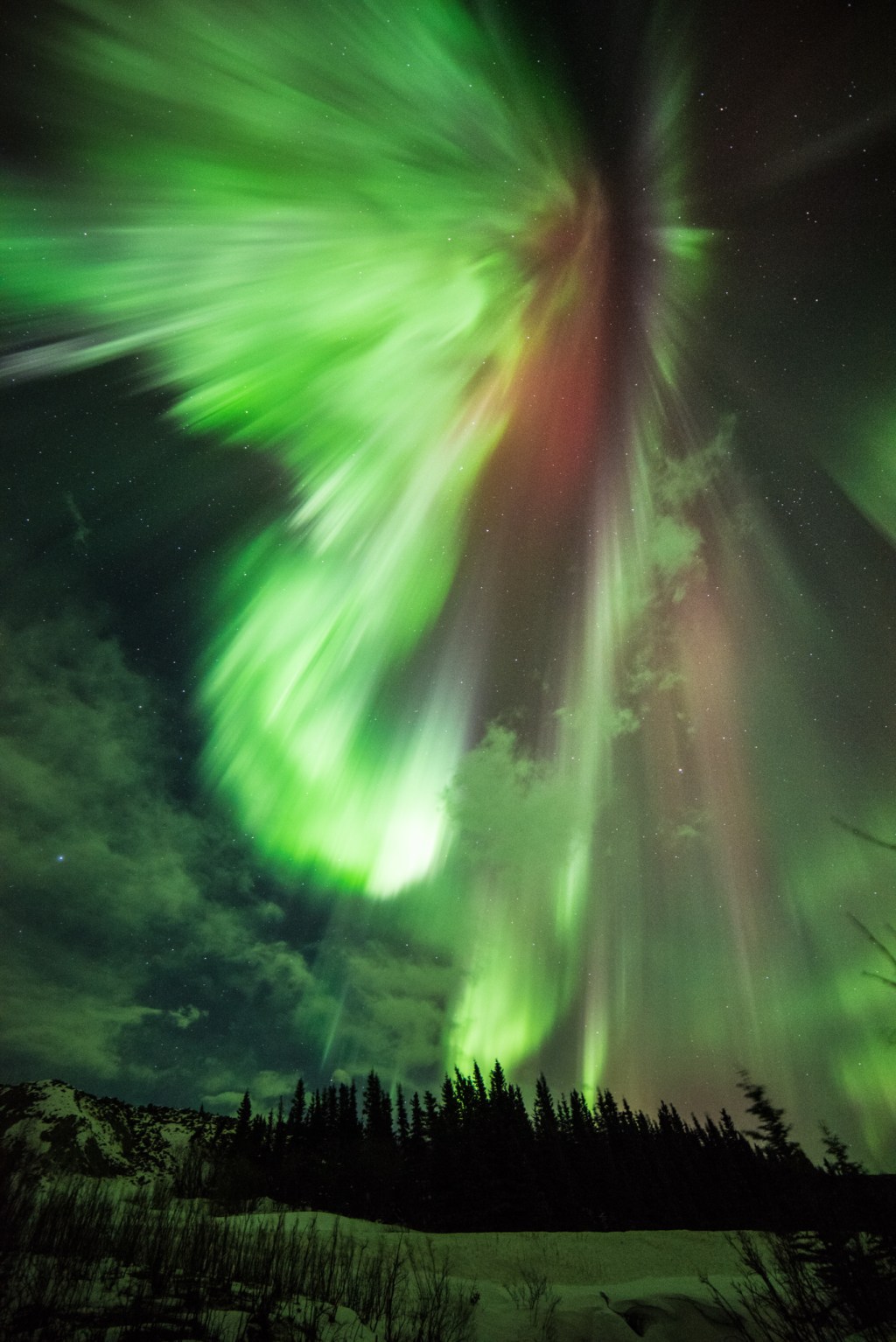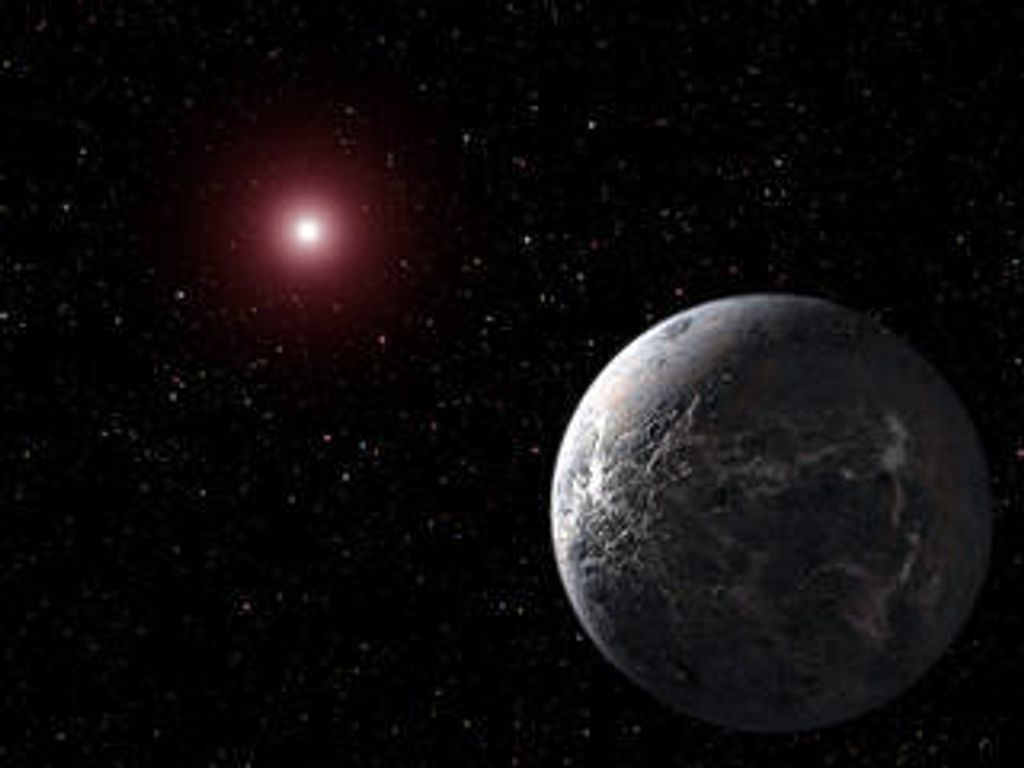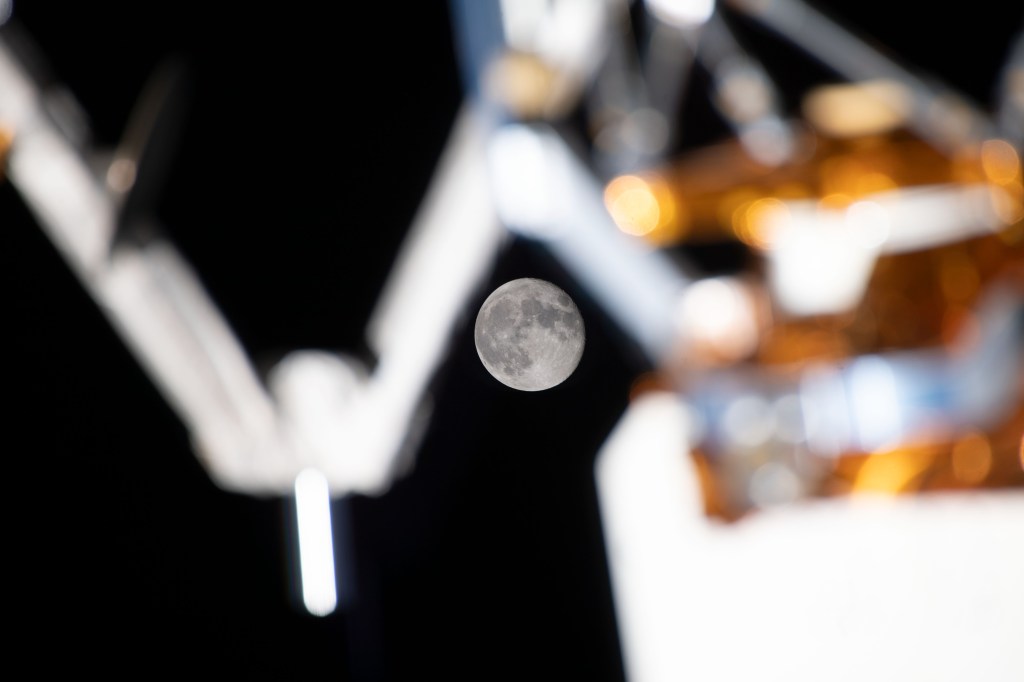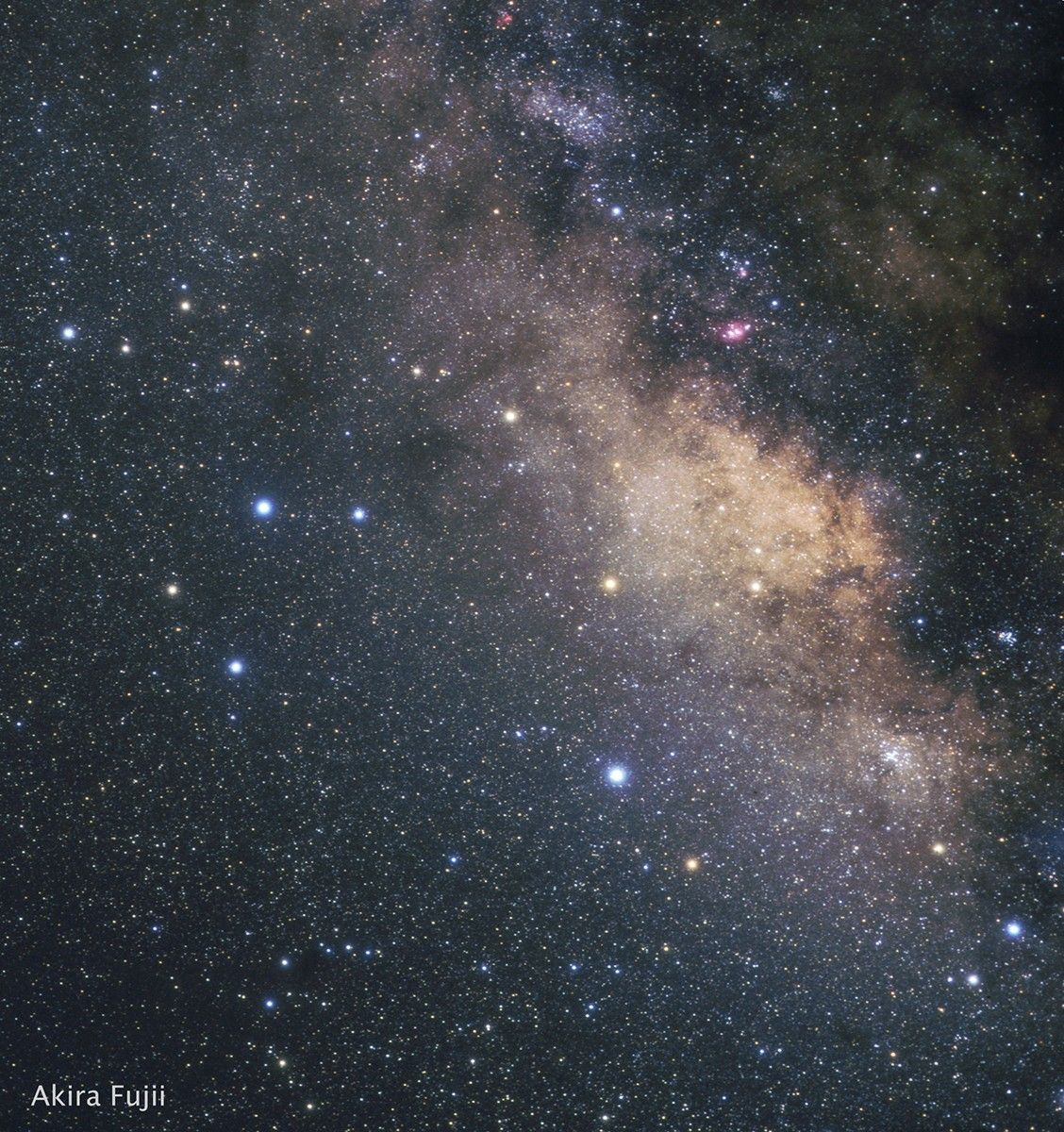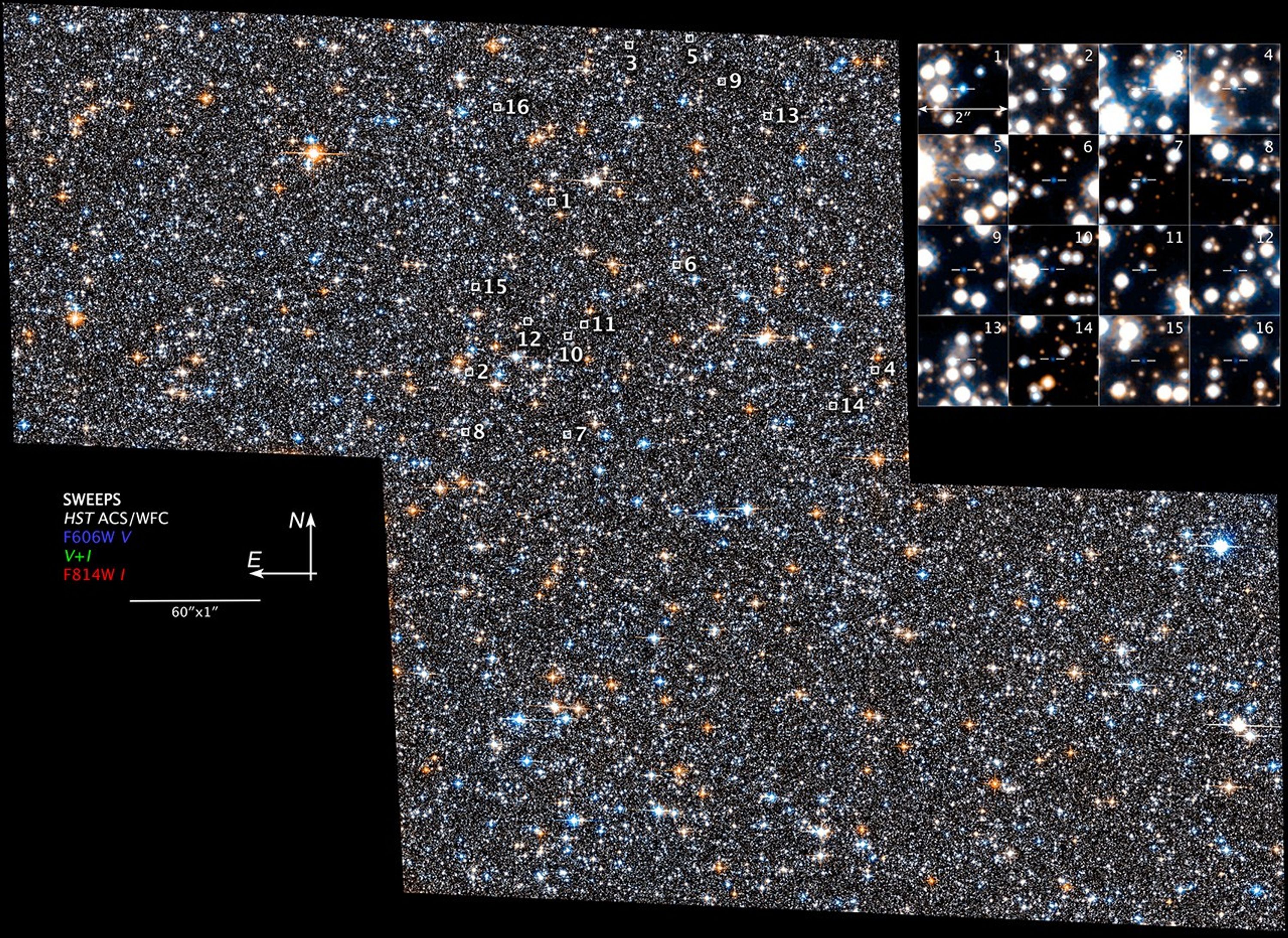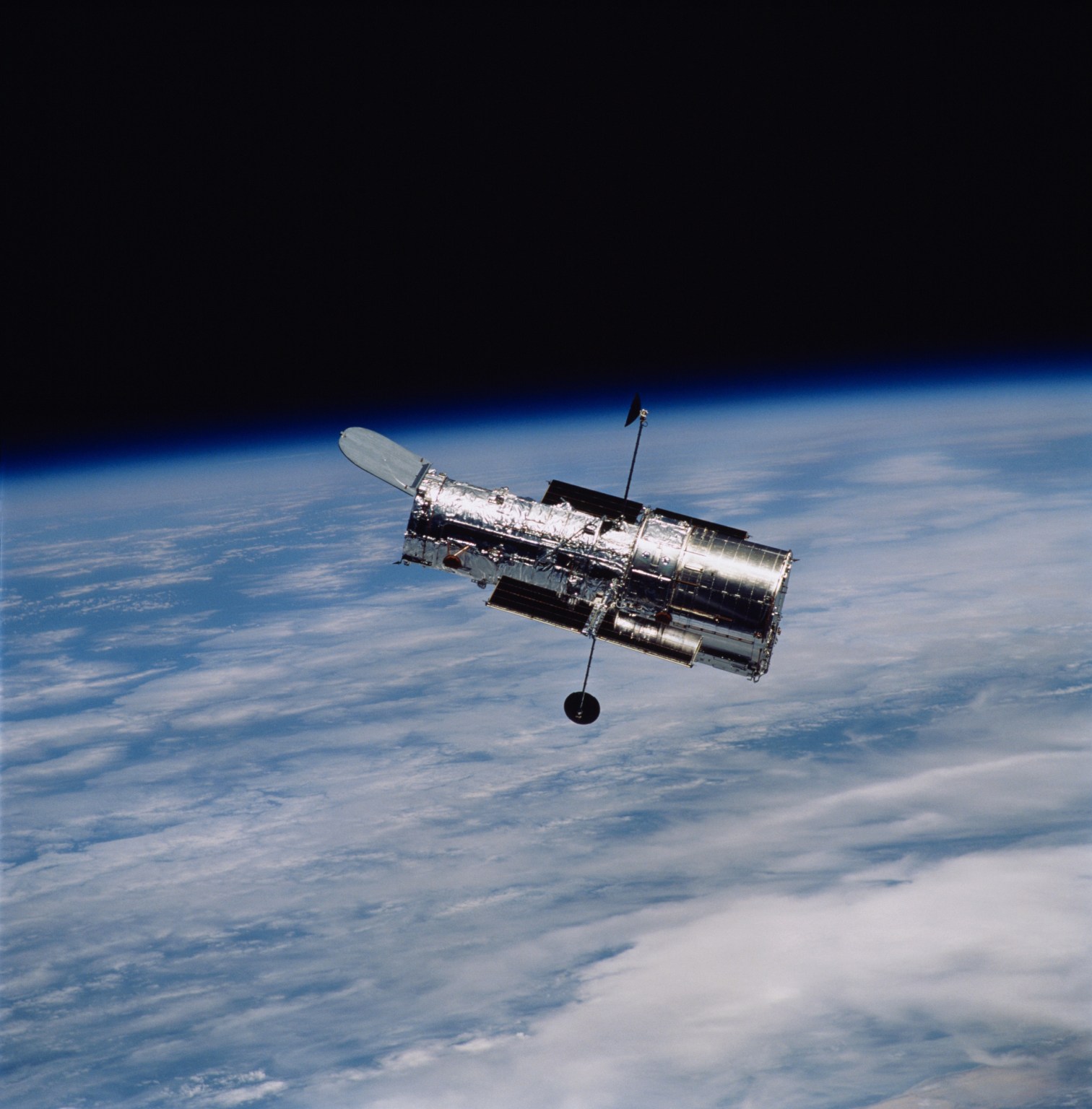1 min read
White Dwarf Stars in the Milky Way Bulge
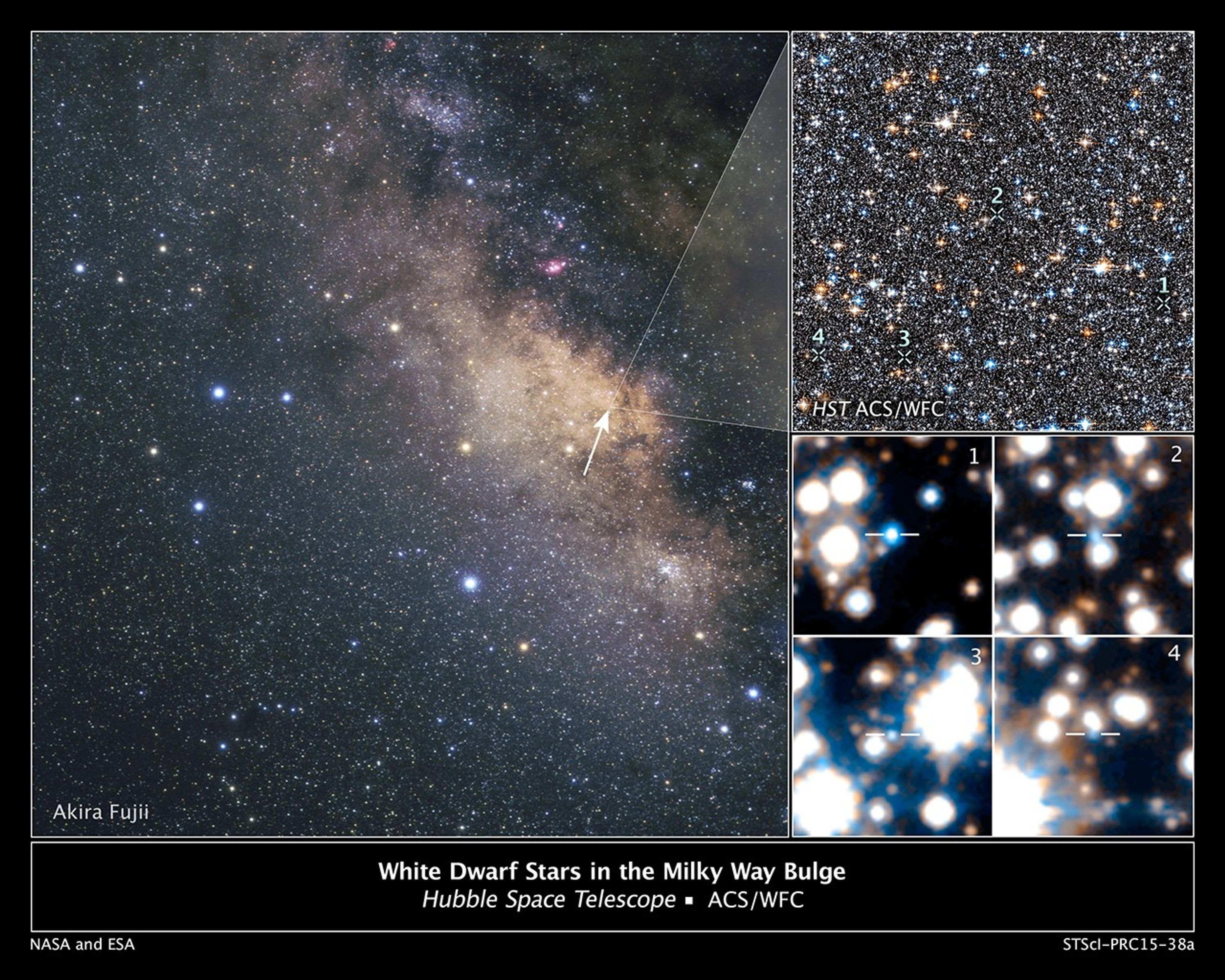
NASA's Hubble Space Telescope has detected for the first time a population of white dwarfs embedded in the hub of our Milky Way galaxy. The Hubble images are the deepest, most detailed study of the galaxy's central bulge of stars. The smoldering remnants of once-vibrant stars can yield clues to our galaxy's early construction stages that happened long before Earth and our sun formed.
[Left] – This is a ground-based view of the Milky Way's central bulge, seen in the direction of the constellation Sagittarius. Giant dust clouds block most of the starlight coming from the galactic center. Hubble, however, peered through a region (marked by the arrow) called the Sagittarius Window, which offers a keyhole view into the galaxy's hub.
[Upper right] – This is a small section of Hubble's view of the dense collection of stars crammed together in the galactic bulge. The region surveyed is part of the Sagittarius Window Eclipsing Extrasolar Planet Search (SWEEPS) field and is located 26,000 light-years away.
[Lower right] – Hubble uncovered extremely faint and hot white dwarfs. This is a sample of 4 out of the 70 brightest white dwarfs spied by Hubble in the Milky Way's bulge. Astronomers picked them out based on their faintness, blue-white color, and motion relative to our sun. The numbers in the inset images correspond to the white dwarfs' location in the larger Hubble view.
Hubble's Advanced Camera for Surveys made the observations in 2004 and 2011-2013.
About the Object
- R.A. PositionR.A. PositionRight ascension – analogous to longitude – is one component of an object's position.17h 59m 01.89s
- Dec. PositionDec. PositionDeclination – analogous to latitude – is one component of an object's position.-29° 13' 40.69"
- ConstellationConstellationOne of 88 recognized regions of the celestial sphere in which the object appears.Sagittarius
- Object NameObject NameA name or catalog number that astronomers use to identify an astronomical object.SWEEPS Field
- Object DescriptionObject DescriptionThe type of astronomical object.Stellar Survey Field Near the Galactic Bulge
- Release DateNovember 5, 2015
- Science ReleaseHubble Uncovers Fading Cinders of Some of Our Galaxy’s Earliest Homesteaders
- Credit
Related Images & Videos
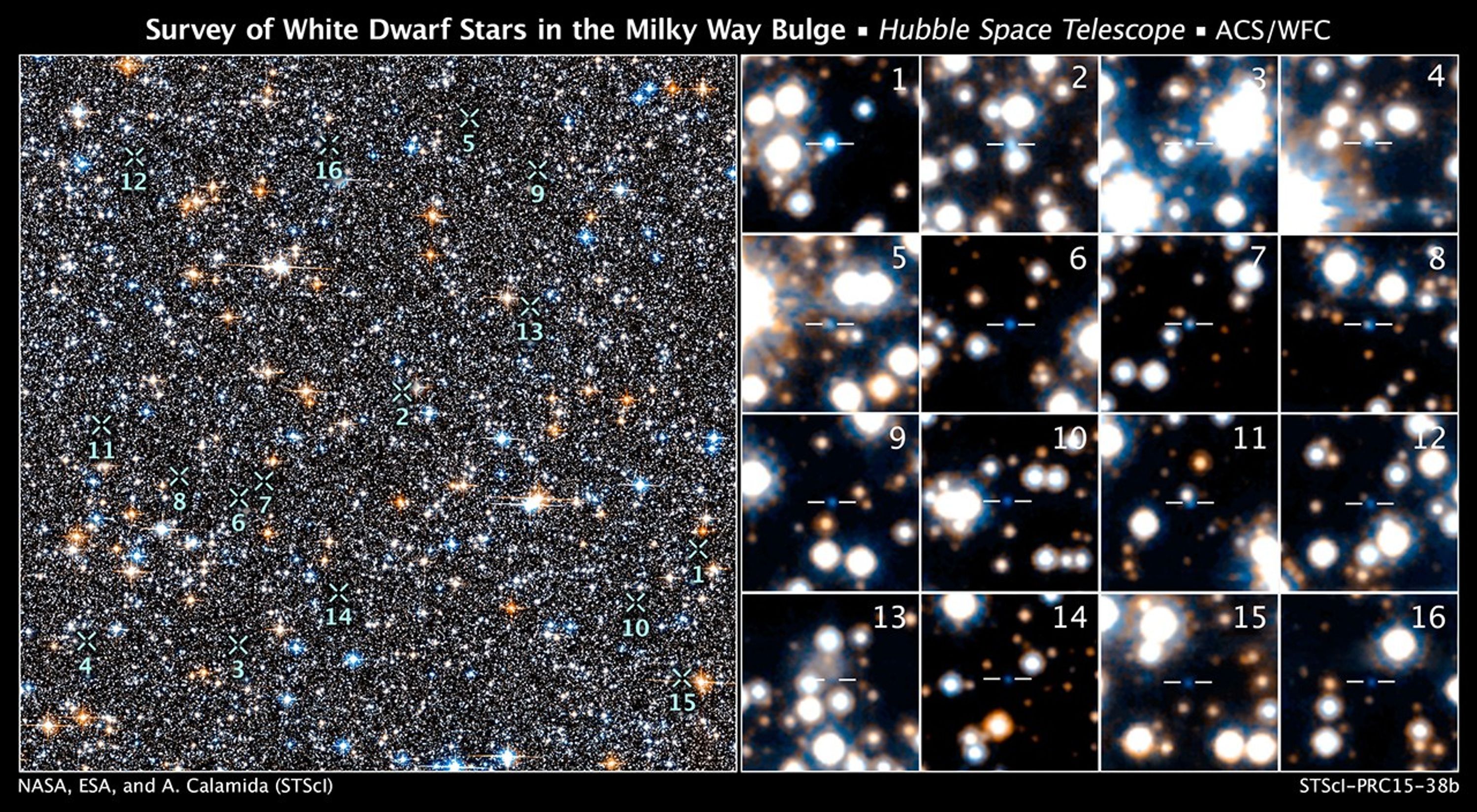
Survey of White Dwarf Stars in the Milky Way Bulge
NASA's Hubble Space Telescope has detected for the first time a population of white dwarfs embedded in the hub of our Milky Way galaxy. The Hubble images are the deepest, most detailed study of the galaxy's central bulge of stars. The smoldering remnants of once-vibrant stars...

Hubble View of Entire SWEEPS Field
This Hubble Space Telescope image shows a dense collection of stars crammed together in the Milky Way galaxy's ancient central hub. The region surveyed represents one entire field of the Sagittarius Window Eclipsing Extrasolar Planet Search (SWEEPS) program. The region is 26,000...
Share
Details
Claire Andreoli
NASA’s Goddard Space Flight Center
Greenbelt, Maryland
claire.andreoli@nasa.gov

